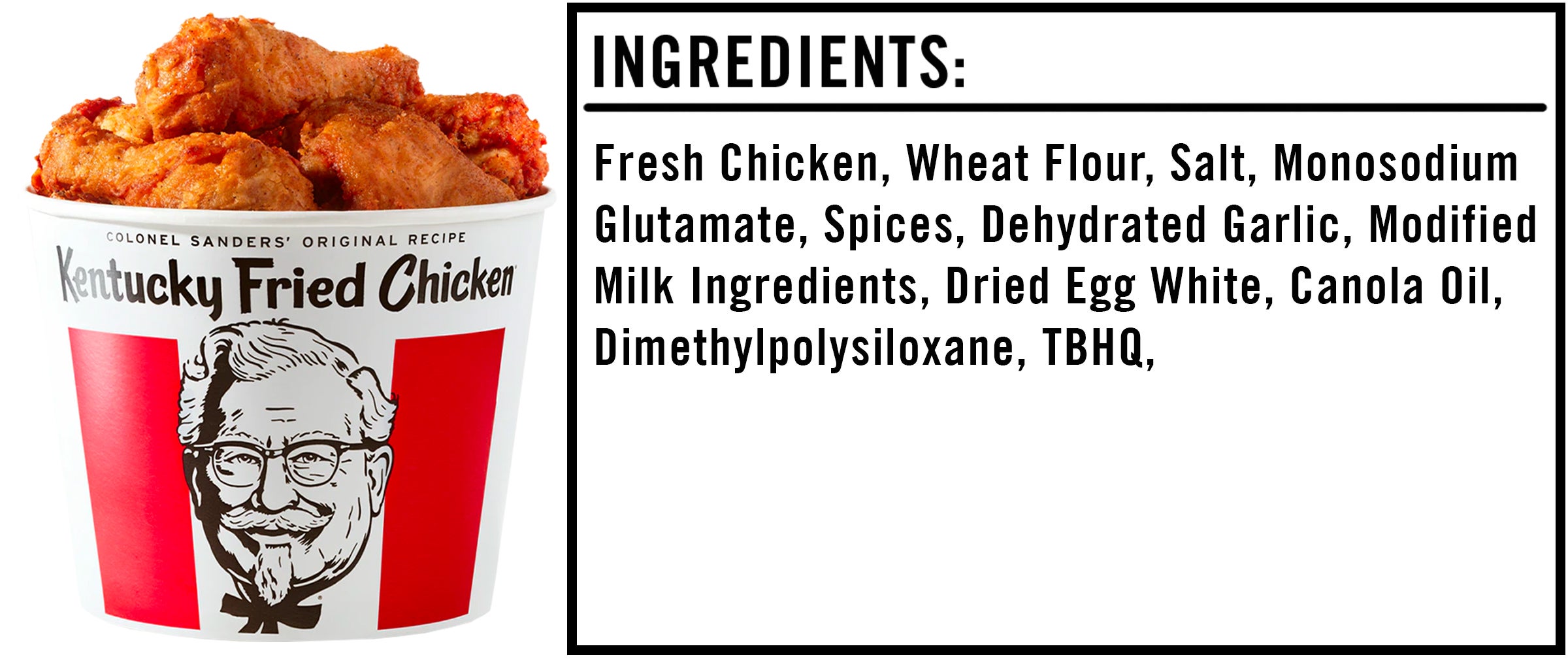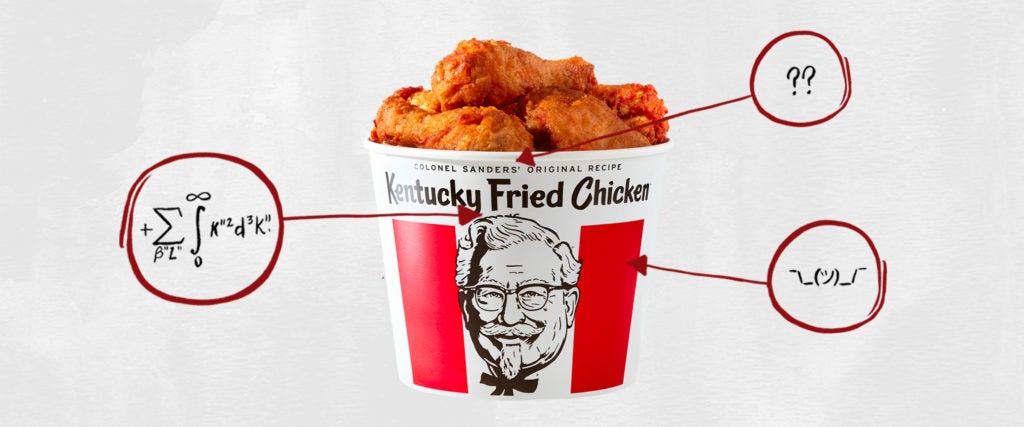We’re often told that you should never eat anything (or put anything on your body) if you don’t recognize what’s in the ingredients list. But since most of us have no idea what xanthan gum or potassium benzoate are — or more importantly, what they’re doing to our bodies — we’re decoding the ingredients in the many things Americans put in (and on, or near) themselves.
This edition: KFC’s Original Recipe Bucket, which is made from 10-ish separate ingredients that we’ve broken down as they appear online.

The Ingredients
1) Fresh Chicken: According to the FDA, “fresh” means “the food is in its raw state and has not been frozen or subjected to any form of thermal processing.” So, surprise: KFC doesn’t freeze their chicken.
Still, the chicken served at KFC has seen its share of scrutiny over the years. It’s been said that the chain is supplied by mutated chickens with extra limbs (although, they won lawsuits against three Chinese tech companies charged with spreading these rumors in 2016). Images from inside farms that raise birds for KFC show just how cramped and limited their lives are before they’re served up in a red-and-white bucket. And just last year, KFC conceded that a third of their chickens suffer from painful inflammation due to the crowded conditions they’re raised in.
So yeah, misery is a crucial ingredient in every one of KFC’s chicken buckets.
2) Wheat Flour: This forms a crisp outer crust when fried.
3) Salt: It boosts the flavor. Keep in mind, however, that a single chicken drumstick and thigh from KFC have more than half your daily recommended sodium intake, so two of each will put you well over what you should have in a day.
4) Monosodium Glutamate: Commonly known as MSG, monosodium glutamate is a savory flavor enhancer, and it occurs naturally in many foods. Despite its bad reputation, MSG is quite safe when used in small amounts, which it often is.
5) Spices: These are the legendary mystery 11 herbs and spices that give KFC its particular flavor. They haven’t come out with the official list, but there has been some serious investigation into the matter, which produced as good a guess as any — salt, thyme, basil, oregano, celery salt, black pepper, dry mustard, paprika, garlic salt, ground ginger and white pepper.
6) Dehydrated Garlic: Because it’s good, alright?
7) Modified Milk Ingredients: This refers to any of the many substances in milk (whey proteins, caseins, lactose) that have been separated out in order to increase their shelf life. The proteins in milk help batter adhere to food, so this is likely a crucial part of the chicken-frying process.
8) Dried Egg White (Egg White, Baker’s Yeast, Citric Acid): Similar to modified milk ingredients, dried egg white helps the wheat flour stick to the chicken, which then forms a golden crust.
Baker’s yeast helps create a crunchy outer coating, and citric acid — a derivative of citrus fruits — acts as a mild preservative.
9) Canola Oil: This is what the chicken gets fried in. It’s okay in moderation, but in large amounts, especially in highly processed foods, it can cause all sorts of problems, including fatty liver disease, insulin resistance and migraines.
10) Dimethylpolysiloxane: This prevents the frying oil from splattering all over the place. It’s “generally recognized as safe” by the FDA, although they emphasize the importance of only using antifoaming agents in small amounts.
11) TBHQ: TBHQ (tertiary butylhydroquinone) is a preservative. Studies cited by the Centers for Science in the Public Interest found that it promotes the growth of tumors in rats, and the National Library of Medicine says that vision disturbances have been reported by humans after consuming the ingredients. So, while the FDA only allows TBHQ to be added in small amounts, this is still an ingredient to be wary of.
The Takeaway
I’m surprised there aren’t more ingredients in KFC’s chicken. However, there are still a few sketchy ingredients — dimethylpolysiloxane and TBHQ — and the high sodium content is a concern.
So, if you’re going for a whole bucket, make sure to share. If nothing else, do it for your health.

